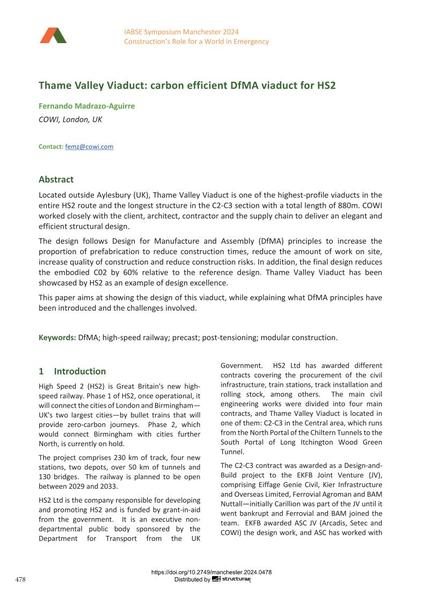Thame Valley Viaduct: carbon efficient DfMA viaduct for HS2

|
|
|||||||||||
Détails bibliographiques
| Auteur(s): |
Fernando Madrazo-Aguirre
(COWI, London, UK)
|
||||
|---|---|---|---|---|---|
| Médium: | papier de conférence | ||||
| Langue(s): | anglais | ||||
| Conférence: | IABSE Symposium: Construction’s Role for a World in Emergency, Manchester, United Kingdom, 10-14 April 2024 | ||||
| Publié dans: | IABSE Symposium Manchester 2024 | ||||
|
|||||
| Page(s): | 478-485 | ||||
| Nombre total de pages (du PDF): | 8 | ||||
| DOI: | 10.2749/manchester.2024.0478 | ||||
| Abstrait: |
Located outside Aylesbury (UK), Thame Valley Viaduct is one of the highest-profile viaducts in the entire HS2 route and the longest structure in the C2-C3 section with a total length of 880m. COWI worked closely with the client, architect, contractor and the supply chain to deliver an elegant and efficient structural design. The design follows Design for Manufacture and Assembly (DfMA) principles to increase the proportion of prefabrication to reduce construction times, reduce the amount of work on site, increase quality of construction and reduce construction risks. In addition, the final design reduces the embodied C02 by 60% relative to the reference design. Thame Valley Viaduct has been showcased by HS2 as an example of design excellence. This paper aims at showing the design of this viaduct, while explaining what DfMA principles have been introduced and the challenges involved. |
||||

